In the U.S. today, 52.1 percent of children under the age of 18 are poor or low-income (38.5 million children). When more than half of our children do not know if they will have a place to sleep, nutritious meals, and safe communities, we are failing our families and compromising the future of this country. It does not need to be this way. We have abundant resources for our children.
Homelessness – Our children, youth and students are experiencing a severe housing crisis.
- More than 1.5 million public school students experienced homelessness during the 2017-18 school year, the highest in the 15 years this data has been gathered. The majority of homeless families are headed by single women with young children.
- LGBTQ+ youth represent between 5-10% of our young people, but between 20-40% of the homeless youth population.
Welfare – our social welfare system has been under steady attack since welfare reform in 1996, while corporate welfare is on the rise
- TANF assisted only 23% of poor families with children. In all but 3 states, benefits have declined since 1996.
- SNAP benefits nearly 40 million people, including 17.5 million children, but work requirements and other limits would eliminate SNAP for over 4 million people, including 1 million children who would no longer receive school meals.
Education – from Pre-K to college, our education system is underfunded and unequal.
- Since 1965, Head Start has served more than 36 million poor children and their families, but it is consistently underfunded. In 2016, Head Start only reached 54% of eligible 3- and 4-year-olds.
- More than half of K-12 students are in highly segregated school districts. In 2016, predominantly white districts received $23 billion more in funding than districts that served predominantly students of color — or $2,200 more per student.
- The total cost of attending a 4-year college in 2015 was $25,409 — 2.5 times as much as in 1968, adjusted for inflation.
- Among single college students with children, 88% are poor or low-income.
- Student debt now amounts to over $1.5 trillion and affects about 43 million Americans.
- From 2001 to 2017, funding for Tribal Schools fell 67%, from over $400 million to just $133 million.
Health and a Healthy Environment – every day our children are facing violence, toxic environments, and other serious threats to their health.
- In 2018, over 11 million children lived in food insecure households.
- At least 4 million families with children are being exposed to high levels of lead.
- 14 million families are faced with unaffordable water bills.
- Nearly 2,400 children died in 2016 due to gun violence.
- Due to wars, resource scarcity and economic and political distress, there are 25.9 million international refugees. More than half of them are children.
While child poverty costs the US economy more than $1 trillion per year, investments in our children has economy-wide benefits, and are easily within reach.
- The effects of bringing all students up to a basic level of achievement on standardized tests could grow the economy by $32 trillion over a long-term, 80-year timeframe.
- For every $1 invested in early childhood education, society would gain $7.30 due to reduced poverty, lower incarceration rates, and better health outcomes.
- A tiny tax on Wall Street could fund the $70 billion needed to provide free public college for all.
- Restoring the corporate tax rate to its pre-2018 level of 35% would raise $130 billion — more than enough to cover the $100 billion required for universal early learning and childcare support for poor and working families.
- An investment of $24.4 billion per year in K-12 schools and teachers could boost academic performance among poor and struggling children for about the same cost as a wall at the southern border.
- $1 billion in SNAP benefits creates $1.70 billion in economic growth.
- A cut of just 1% to the military budget would cover nearly 8 million additional Head Start spots.
Read more from the Moral Agenda here.
Read more from the Poor People’s Moral Budget here.
Sources: Homelessness: Education for Homeless Children and Youth Federal Data Summary – School Years 2015-16 through 2017-18 – nche.ed.gov/wp-content/uploads/2020/01/Federal-Data-Summary-SY-15.16-to-17.18-Published-1.30.2020.pdf; Lesbian, gay, bisexual and transgender youth: An epidemic of homelessness – thetaskforce.org/lgbt-youth-an-epidemic-of-homelessness/; Welfare: Chart Book: TANF – cbpp.org/research/family-income-support/chart-book-temporary-assistance-for-needy-families; Characteristics of SNAP Households: FY18 – fnsprod.azureedge.net/sites/default/files/resource-files/Characteristics2018-Summary.pdf; Trump Administration’s Latest Attack on Struggling Americans Would Spike Hunger for 3 Million People – frac.salsalabs.org/comment-on-trump-cat-el-proposed-rule-reopenedoct2019/index.html; Education: Overview of the State of America’s Children 2017 – childrensdefense.org/wp-content/uploads/2017/12/stateof-americas-children-overview.pdf; How Much Wealthier Are White School Districts Than Non-White Ones? $23 Billion, Report Says – nytimes.com/2019/02/27/education/school-districts-funding-white-minorities.html; Table 330.10. Average undergraduate tuition and fees and room and board rates – nces.ed.gov/programs/digest/d15/tables/dt15_330.10.asp; 4.8 Million College Students are Raising Children – luminafoundation.org/files/resources/college-students-raising-children.pdf; Quarterly Report on Household Debt and Credit 2019:Q4 – newyorkfed.org/medialibrary/interactives/householdcredit/data/pdf/HHDC_2019Q4.pdf; Federal Student Aid Portfolio Summary 2019:Q4 – studentaid.gov/sites/default/files/fsawg/datacenter/library/PortfolioSummary.xls; Maintenance of Federally Funded Tribal Schools – cbpp.org/sites/default/files/atoms/files/5-19-17bud_tribalschools.pdf; Health: Houshold Food Security in the United States in 2018 – ers.usda.gov/webdocs/publications/94849/err-270.pdf?v=963.1; CDC’s Childhood Lead Poisoning Prevention Program – cdc.gov/nceh/information/program_factsheets/lead_program_overview.PDF; A Burgeoning Crisis? A Nationwide Assessment of the Geography of Water Affordability in the United States – journals.plos.org/plosone/article?id=10.1371/journal.pone.0169488; Fatal Injury Reports – webappa.cdc.gov/sasweb/ncipc/mortrate.html; UNHCR Figures at a Glance – unhcr.org/figures-at-a-glance.html; Investments: Economic Gains for U.S. States from Educational Reform – nber.org/papers/w21770.pdf; Quantifying the Life-Cycle Benefits of a Prototypical Early Childhood Program – nber.org/papers/w23479.pdf?sy=479; Summary of Sen. Sanders’ College for All Act – https://www.sanders.senate.gov/download/collegeforallsummary; Using Dynamic Analysis Makes Tax Reform 30 Percent Less Challenging – files.taxfoundation.org/legacy/docs/sr210.pdf; By age 3, inequality is clear – Washington Post 9/26/17; The Real Cost of the Border Wall – finance.yahoo.com/news/real-cost-trump-border-Wall-195830968.html; Policy Basics: SNAP – cbpp.org/research/food-assistance/policy-basicsthe-supplemental-nutrition-assistance-program-snap; Tradeoffs: Your Money, Your Choices – nationalpriorities.org/interactive-data/trade-offs/
